That's Pop'n'Roll: Shaun Cassidy and His 1970s Teen Idol Recording Career
Wham Bam, Glitter'n'Glam! Shaun, in the shadow of half-bro David's teen idolotry/personal hell combo, rockets to teenybop stardom from the seedy stages of W. Hollywood haunts. We go behind the shag!
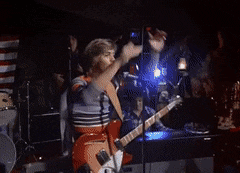
“I'm going to call one of my heroes, Todd Rundgren!” Shaun was talking to Lyndsey Parker of Yahoo! Entertainment in 2020, and recounting his 6-albums-in-4-years pop star recording career that peaked, teetered, then petered 4 decades before, in 1980.
He was at a career crossroads, and thought this radical shift in musical direction at the hands of “A Wizard, a True Star” might be just the thing to lift him off the pages of Flip and Tiger Beat Magazines, and into a musical zone that might creep him closer to rock credibility…or, at least sustainability.
But, before there was the Todd-produced Wasp in 1980, there were the familiar trappings one particular family member was well aware of, and experienced for five years…intrusive teen mags, hounding reporters, screaming fans with press-on nails, and the challenges of the charts!
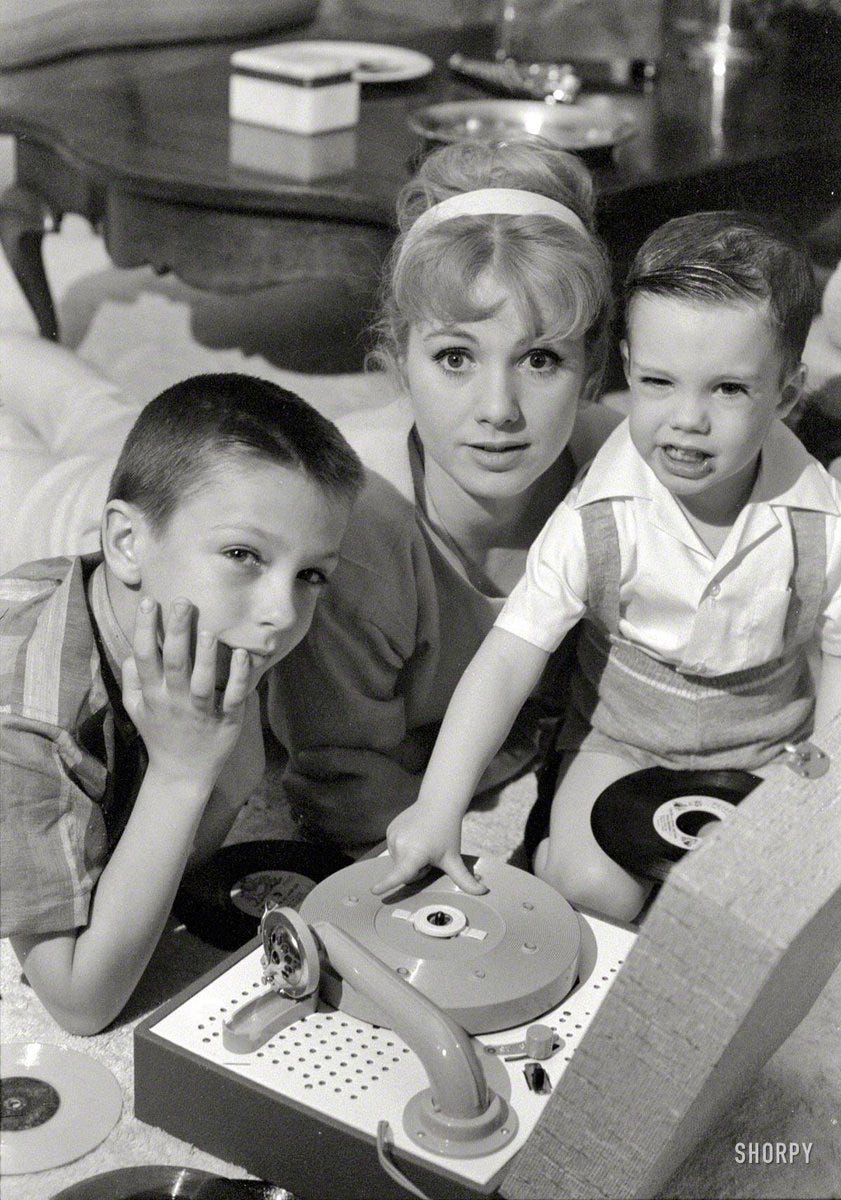
And, Despite All the Warnings…
Shaun had a front row seat for the five years (1970-1974) that half-brother David Cassidy happily ascended the TV star/pop star ladder (on ABC-TV’s The Partridge Family), only to watch him become artistically stunted and hand-cuffed, as the corporate TV and record machine giddily chewed him up and spat him out.
Even when David finally and inevitably began his post-Partridge career in 1975, he did it in nearly a vacuum: Gone were the flurry of press releases and splashy fan mag covers at his every move; gone were the 15-hour weekday shoots followed by the weekend jetting to sold-out solo shows and mall appearances.
David, before passing far before his time in 2017, had a decades-long career, but every move he made seemed to be forever shackled to those five short, but arduous, personally enriching, yet emotionally expensive years.
Shaun was 11 in late 1969 when David, then 19, answered a simple acting audition call for a musical sitcom vehicle being launched by Screen Gems Television, where singing was never part of the deal…at least, at first. But, if your voice impresses your producers (and the series’ music producer, Wes Farrell), a singing career could be born…and was.
In the ensuing five years, Shaun was given every plausible reason to avoid the record biz; plus, he was handed every excuse why he shouldn’t even try, given David’s simple acting job turning into a 25-hour-a-day, soul-draining singing and acting gig that, coupled with the breathless press coverage, practically single-handedly coined the term “teen idol” for a new generation, a decade beyond all the American Bandstand-ing Bobbys and Frankies.
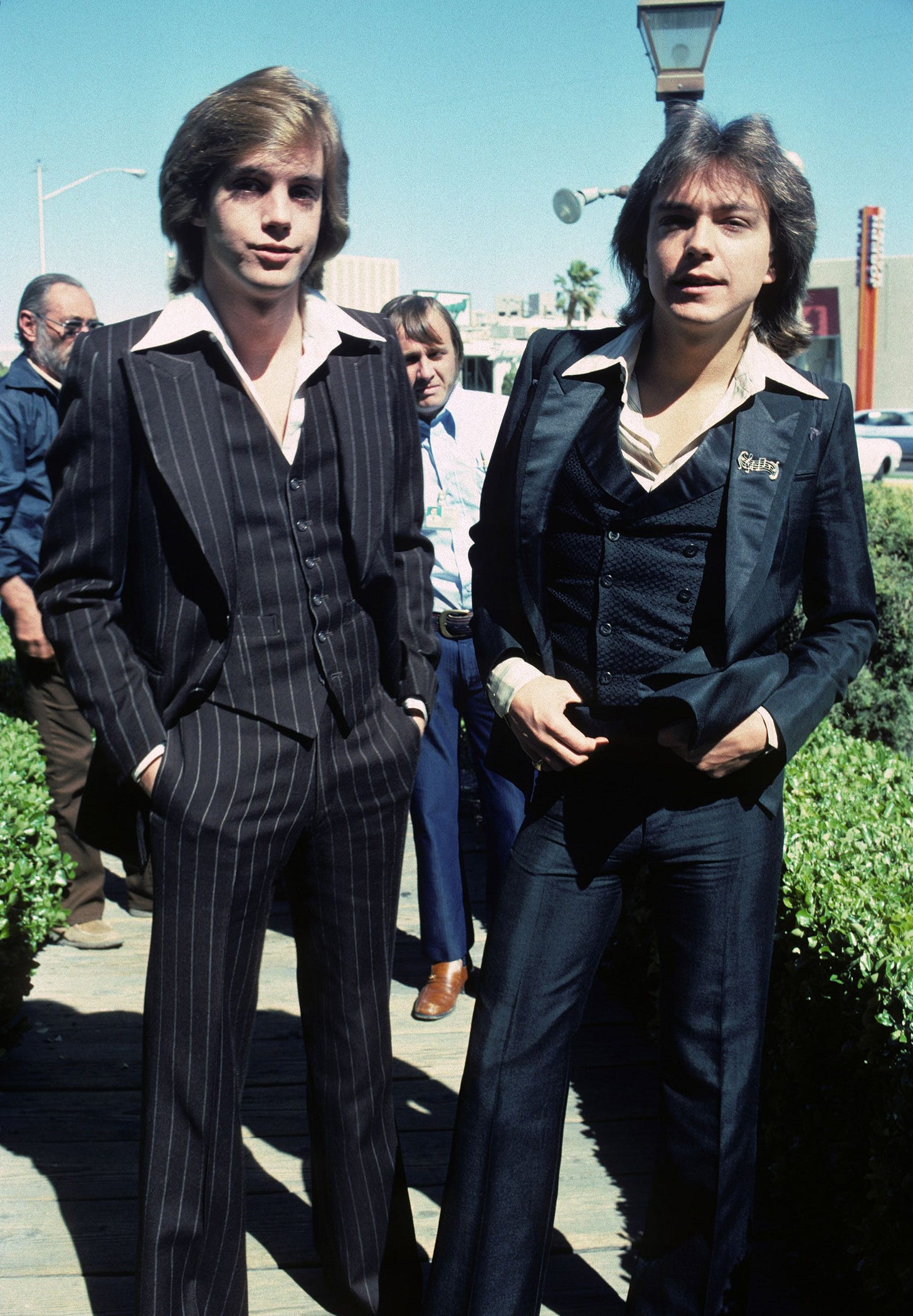
Front Row & Backstage has proudly featured much about David’s career in past articles. One recent one features (among other surprises) the audio of a 1975 interview this writer was fortunate to have with David on the eve of his first post-Partridge solo album on RCA Records:
In a Houston Penthouse With David Cassidy: Doing The "Shrimp Shuffle" in 1975
He was 25 years old, which is astounding to realize when you think about the worldwide fame he had accrued in the four years that millions of TV sets and turntables were tuned to all things Keith Partridge and his fictional family. I was 20 at the time (mid-summer 1975), and as
The Prints and the Popper
Shaun was around 11 when he started his garage band, Longfellow. Where David, as a late-’60s high-schooler, played guitar and emulated his hard rock heroes, Hendrix, Clapton, and Jimmy Page’s Led Zeppelin, Shaun was taken by the British glitter’n’glam rockers of the day who were emerging, mostly from the UK.
He idolized Bowie, Iggy, T. Rex, Roxy Music, Todd Rundgren, The New York Dolls, Sparks, Slade, and virtually anybody who was spun on the turntables at Rodney Bingenheimer’s English Disco at 7561 Sunset Blvd in Hollywood.
It was quite nearby, on the sidewalk in front of The Roxy, that I ran into Rodney in June 1979; moments later, I bumped into his good friend, Kim Fowley, a rock’n’roll legend and noted nightcrawler in his own right! I was visiting L.A. for a week, and the notion of being able to simply bump into a living, breathing page out of Hit Parader Magazine prompted my move there from Houston six months later.

Bingenheimer’s was only open for just a hair past two years (late 1972 through early 1975). Typically Hollywood-lian tawdry, it became home to rampant drug use, as well as underage girls (and, at least one underage boy) who were allowed to frequent the place…on school nights, yet.
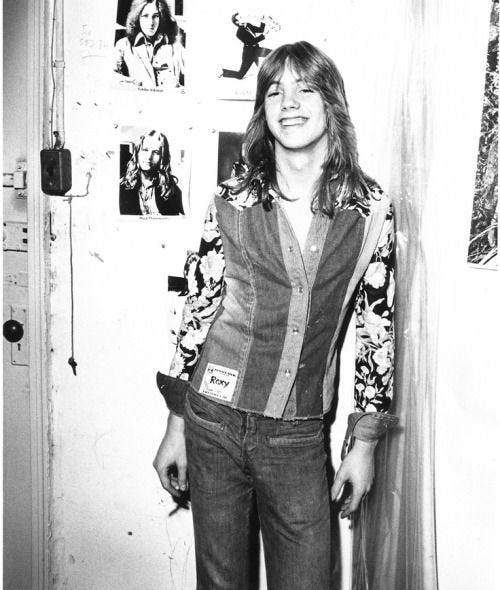
In this photo (below) from 1973 (and Rodney’s personal collection), Shaun is seen, second from left, with his band of fellow long-haired rockin’ teens, Longfellow. They’re perched at the special, but cramped and raised “scenester table”/VIP area near the dance floor, where everyone who was anyone would be seated in the tiny club owned by former Mercury Records promo czar/Davy Jones’ Monkees stand-in/King Scenester/Mayor of Sunset Strip/KROQ-Pasadena and Sirius/XM satellite radio DJ, Rodney Bingenheimer, now 76:
Bowie, himself, was a frequent visitor to Rodney’s (and one who heavily suggested he open an English Disco). Rodney, in fact, was in Mercury Records’ employ by late 1970, when Bowie’s The Man Who Sold the World was released by Mercury in the States (Bowie’s sole album for the label).
Bingenheimer (pictured above, center, with his English Disco regulars), it should be noted, did more than his share to bring Bowie to the attention of Mercury A&R man, Paul Nelson, who also briefly served as Bowie’s publicist at the time (and record reviews editor for Rolling Stone, 1978-1983).
Bowie had this to say about the trendy club in 1992 to Details Magazine: “Alone in L.A., Rodney seemed like an island of English nowness. He even knew British singles and bands that I wasn't aware of. Rodney singlehandedly cut a path through the treacle of the Sixties, allowing all us avants to parade our sounds of tomorrow dressed in our clothes of derision.”
Indeed, this may have been the womb that whelped “Jean Genie.” And, this was Shaun’s world: He knew it, and he loved it.
Curb: “Your Enthusiasm”
While Shaun attended a couple boarding schools back east, he graduated from Beverly Hills High in 1976. He was still there in 1975, when Mike Curb (below) signed him to his Curb Records, which had a longtime distribution deal with Warner Bros. Records. A record industry vet (songwriter, composer, exec) since 1963 at age 18, Mike and Shaun were, right away, kindred pop spirits.
Curb, politically conservative, was clean-cut and bring-home-to-mama handsome. He brought together The Mike Curb Congregation, which (not unlike Columbia Records’ trio of MOR re-interpretation kings, Ray Conniff, Andre Kostelanetz and Percy Faith), recorded many adult contemporary (aka MOR, middle-of-the-road, or easy listening) albums.
Michael Lloyd was the perfect producer to bring aboard the Shaun train. He ended up producing the five albums prior to Shaun’s 1980 Todd Rundgren-produced Wasp.
Lloyd and Curb were longtime musical cohorts from the ‘60s, and Lloyd was the teen pop producer of the day at this point, knob-twiddling for the likes of Leif Garrett (Atlantic Records, late ‘70s), The Osmonds (MGM, three co-produced in ‘72), Kristy and Jimmy McNichol (RCA, 1978), and his own Cotton, Lloyd, and Christian trio on 20th Century Records in 1975.
Thinking that dipping their commercial toe in the waters of two other continents with Shaun might be the way to go for Warner Bros. International, Australia and Europe were the first to see Shaun Cassidy, the lad’s self-titled debut on record store shelves, in 1976. The album was a carefully-selected (and brilliant) mix of rock oldies and recent rock-evocative songs (culled, I’m sure by Lloyd, former A&R Veep of MGM Records in 1970, hired by label prez, Curb, hence Lloyd’s ‘72 Osmonds hook-up).
Proving successful after a couple Top Ten hit singles (Neon Philharmonic’s 1969 Top 20 hit, “Morning Girl,” and the newly-solo power pop kingpin, The Raspberries’ Eric Carmen’s “That’s Rock’n’Roll”), and sensing it might be “safe”(!) now (“Hey, this just might work!”), domestic Warner Bros. unleashed “Da Doo Ron Ron” and Shaun’s album in the U.S. in June 1977. Shaun hit #1 with his cover of the Phil Spector/Ellie Greenwich/Jeff Barry legendary 1963 Crystals smash.
FR&B’s Stephen Michael Schwartz had a “Da Doo Ron Ron” arrangement of his own, fully-produced (by David Kershenbaum) and recorded, in 1974, two years before Shaun’s. It was set to be on Stephen’s self-titled debut album for RCA Records (and maybe released as a single), but it failed to make the final track listing on the record. While Shaun’s cover is easily found, Stephen’s isn’t. But, here it is. Click on this sentence to hear it.
Born Late
Shaun’s sophomore effort, Born Late, was another album of deftly chosen ‘60s covers (songs by the Rascals, White Plains, and Lovin’ Spoonful), merged with another Eric Carmen original, the rocker, “Hey Deanie,” and three written solely by Shaun (he had one on his debut).
Notable on this album, too, are Shaun’s two songs co-written with 1970’s sitcom star, Room 222’s David Jolliffe (“It’s Up to You” and “Audrey”), with the former also co-written by TV child star, Billy Mumy, who played Will Robinson on Lost in Space (CBS-TV, 1965-’68):
Under Wraps
July 1978 saw the release of Shaun’s third LP, Under Wraps, and the hit parade began dissipating at this point. Michael Lloyd is still producing, but has given Shaun, now, four solo compositions, and the lean is less toward rockin’ pop than to a more “adult” focus, using songwriters with more “serious” intentions (ballads by Peter McCann and fellow Curb/Warner Bros. artist, Bill LaBounty, and a surprisingly rockin’ Bruce Roberts/Carole Bayer Sager co-write).
One of the strangest songwriting collabs happens on this album, too. As David had a Brian Wilson co-write (with America’s Gerry Beckley) on his 1976 Getting it in the Street album (“Cruisin’ to Harlem”), Shaun also has a song written by the legendary Beach Boy. Joining Brian in writing “It’s Like Heaven” (above), is Diane Rovell (Brian’s one-time sister-in-law, and singing member of American Spring and The Honeys), as well as Brian’s caretaker and bodyguard at this time (1977-’79), Rocky Pamplin (shown below), a former college football running back, and a May 1976 Playgirl cover and centerfold model:
Joining Shaun in the studio for his Under Wraps were a couple musicians who had recorded with Stephen Michael Schwartz, including background singer, Carmen Twillie, and former Elton John Band bassist, Dee Murray, shown below in-studio for Stephen’s second RCA album three years before Shaun’s sessions (shown above Dee in the photo below, in black jacket, is eventual 16-time Grammy-winner, the 25-year-old David Foster, hired by Stephen to be musical director and play keyboards for the sessions at RCA Studios; photo from Schwartz’s personal collection):
Live and Room Service
Shaun’s fourth and fifth albums were both produced (as were the first three) by Michael Lloyd. The fourth, That’s Rock’n’Roll Live (released in early 1979), even featured Lloyd on rhythm guitar and background vocals, the Crystals themselves, on “Da Doo Ron Ron”’s background vocals, and Shaun’s occasional songwriting partner, actor David Jolliffe, on percussion and background vocals.
Shaun also unveiled his cover of The Righteous Brothers’ “You’ve Lost That Lovin’ Feeling” (written by Phil Spector, Barry Mann, and Cynthia Weil).
Room Service, released in July 1979, uses seven different keyboardists (of whom Shaun and Lloyd are two), and four guitarists. While Shaun and Lloyd wrote or co-wrote nearly all the songs, Shaun does a cover of The Box Tops’ “The Letter” (written by Wayne Carson).
Allmusic’s Ralph Heibutzki put the album into perspective: “Shaun Cassidy's pop/rock career had effectively peaked when this album appeared. Almost anyone in Cassidy's position could have made this sort of album, which suffers from a nagging seen-it-all-done-it-all syndrome -- which he acknowledged on the new wave gestures of his next album, Wasp.”
Shaun’s Album #6! “Audio Autopsy, 1980: New Wave "Wasp"🐝The Unlikely Shaun Cassidy Album Produced by Todd Rundgren”:
Audio Autopsy, 1980: New Wave "Wasp"🐝The Unlikely Shaun Cassidy Album Produced by Todd Rundgren
“I played the Houston Astrodome for like 50,000 people and said goodnight, and I thought I’d probably do another concert in the next year or so. I didn't know Wasp would be the last record I’d make, but it was.”

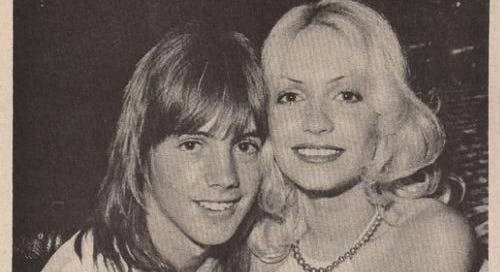


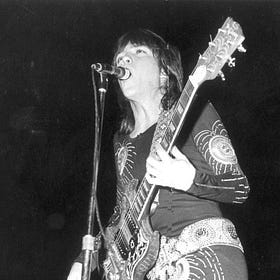


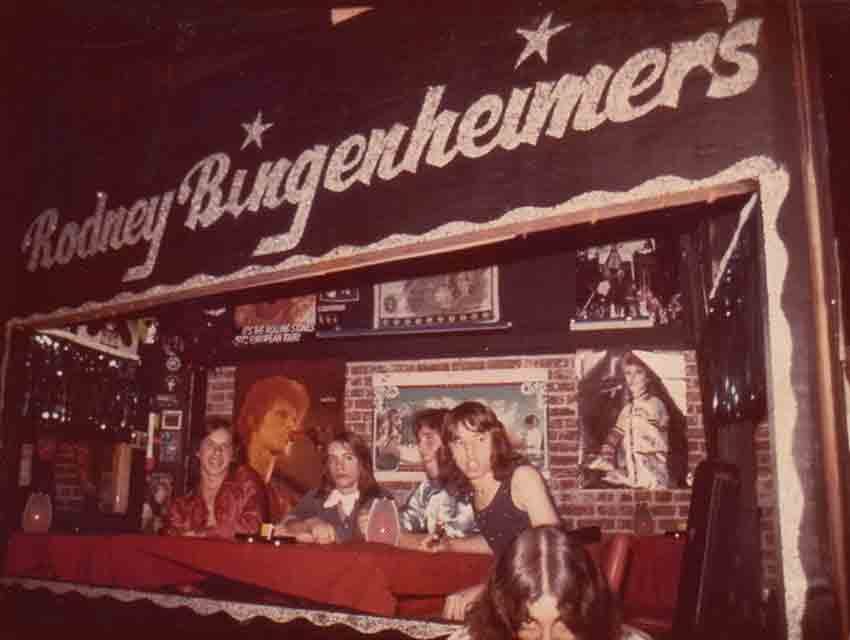
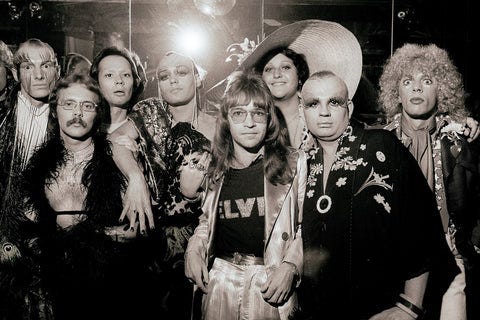
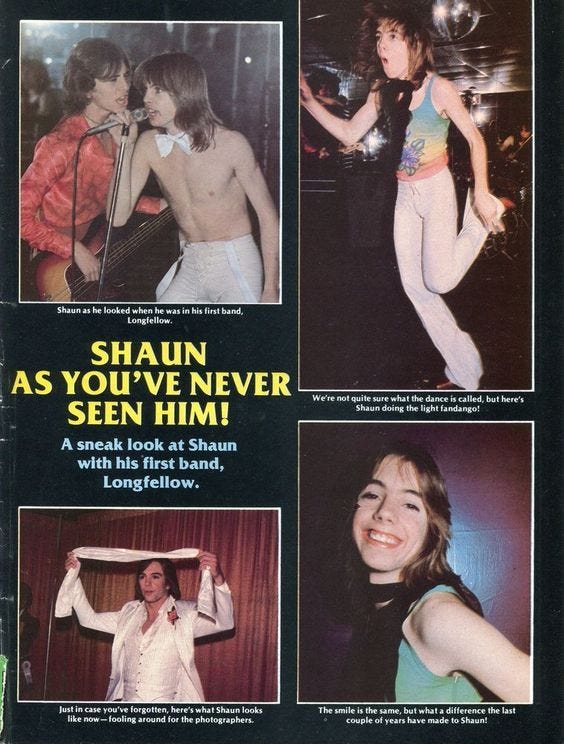
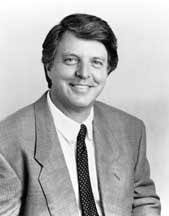
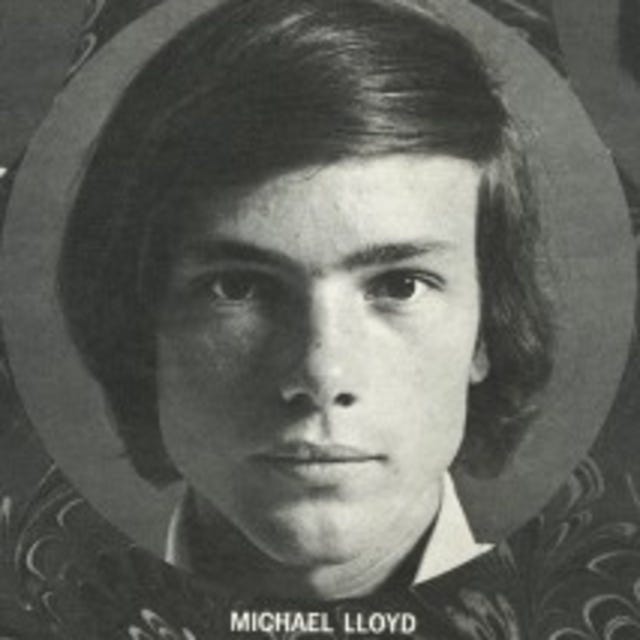
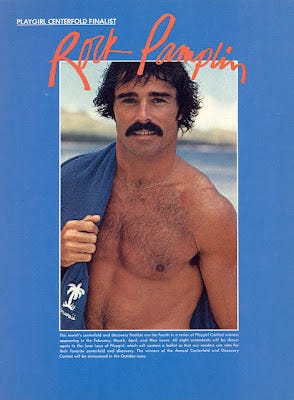
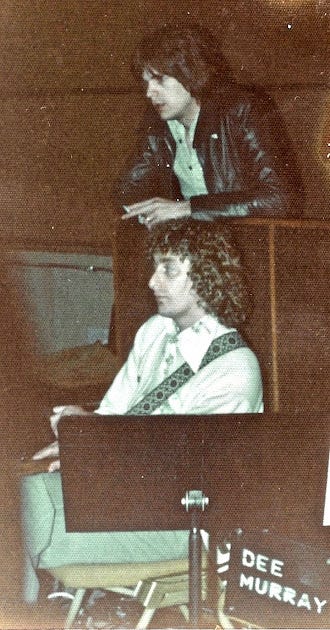


OMG, Shaun Cassidy was the first full concert I ever saw, the first poster I ever hung, the main reason I watched The Hardy Boys. I got to see him just before the pandemic in an intimate show. I never knew beyond the hits although my friend and I did pull up Wasp to listen to on the way home from the concert. Going to check out that post next!
Wow, I don't know how you do it--the wealth of detail, especially in the backstories of even peripheral characters. Of course I grew up aware of the Partridge Family-It took me years to get over my crush on Susan Dey. But I never paid attention to DC's career after that-not unlike many other people, which of course is part of his tragedy. And Shaun was just a momentary pretty face on the supermarket checkout rags--thanks for filling in a bit of the real history.